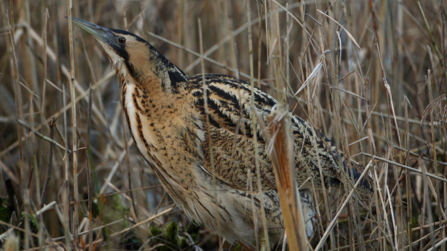
A well-camouflaged bittern. Photo by Tim Stenton
Chaffinch on frosty hedgerow by Mark Hamblin/2020Vision

A well-camouflaged bittern. Photo by Tim Stenton
See if you can spot a bittern at Calvert Jubilee nature reserve. Wrap up warm, bring your binoculars if you have some, and sit back to enjoy the variety of winter birds that gather here.
Bitterns pick their way through the reeds looking for food. They're very well-camouflaged with streaky yellow, brown feathers, just like the reeds, which makes a sighting even more rewarding.
Look closely at the birds on the water too and you might spot rarer visitors in amongst the wigeon, pochards and tufted ducks. Learn about the difference between two types of duck, the divers and dabblers in our blog.
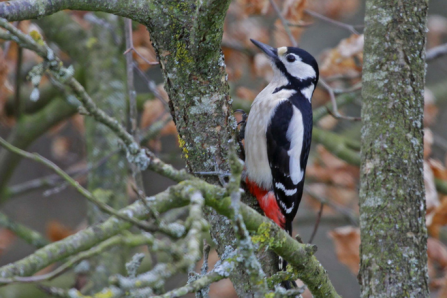
Great spotted woodpecker by Margaret Holland
This tranquil haven with a rich variety of wildlife is just perfect for recharging the batteries at this busy time of year.
The woodlands are home to many birds. Listen out for the drumming of the great spotted woodpecker and the 'yaffle' of the green woodpecker. Tawny owls can be heard hooting in the trees and the 'pitchou' call of the marsh tit is commonly heard.
You can explore the reserve and surrounding countryside on our circular Tring Park Wild Walk.
Learn why Dancersend is known as the mother of all nature reserves and discover its importance place in the history of nature conservation in the UK.
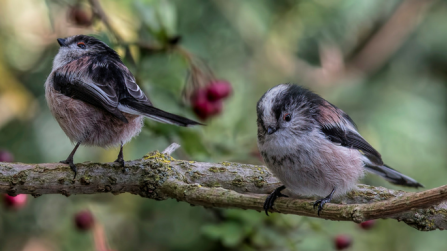
Long-tailed tits. Photo by Roy McDonald
Explore the network of paths across this beautiful and varied heathland and woodland in West Berkshire.
The broad-leaved woodlands contain mainly oak and birch but sweet chestnut, beech, hazel and willow are common. Winter parties of long-tailed tits feed on the newly forming buds of the trees, they are often accompanied by goldcrests, great tits and blue tits. The shrubs and scrub provide an ideal habitat for birds such as robins, wrens and warblers.
For a fun, family activity, print our crayon rubbing trail and take it with you when you visit to discover more about the special heathland wildlife here.
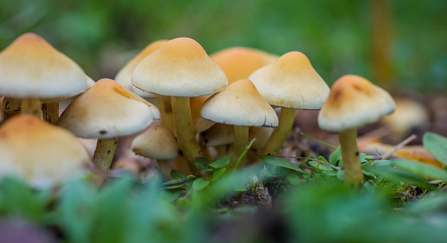
Suplhur tuft. Photo by Matthew Roberts
The diversity of this small nature reserve tucked away to the north-east of Oxford is quite staggering. Boasting ancient broadleaved woodland, limestone grasslands, reedbed, fen and a stream, the reserve supports over 400 plant species.
The short, circular wildlife walk passes through all the different habitats and gives you a good overview of the reserve. Keep an eye open for fungi growing on the woodland floor and dead wood, and listen out for the mixed flocks of tits including long-tailed tits and marsh tits calling in the woodland.
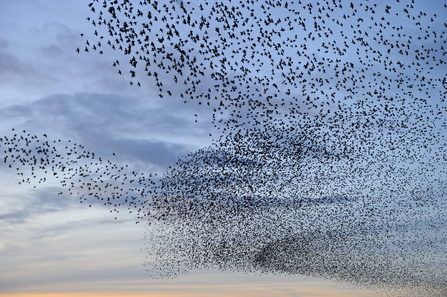
Starling murmuration by David Tipling/2020VISION
Reedbeds are among the most important habitats in the UK for birds. Some species, such as reed warblers, will nest here while wildfowl like tufted ducks and gadwall feed in the shallows. Thatcham Reedbeds is one of the best places in our area to look for a starling murmuration. Pay a visit close to dusk and see if you can spot one.
You can explore the reedbeds and the surrounding countryside on our circular walk which includes Bowdown Woods and Greenham Common. Round off your visit by popping into the newly refurbished Nature Discovery Centre. Why not have a hot drink in the cafe then explore the new 'hide in the sky' and browse the shop for a few Christmas gifts.
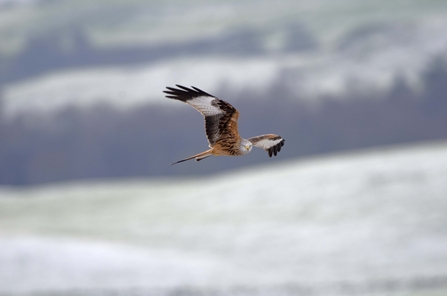
Red kite in flight. Photo ©David Tipling/2020VISION
A hidden wildlife gem nestling in the Chiltern Hills where you can escape for some peace at a busy time of year. There are lots of paths to explore the extensive woodland here and a one-mile circular wildlife walk, You may be lucky to spot some of the 900 species of fungi recorded here as you go!
Look up to see red kites and buzzards soaring high overhead. Pop into the two bird hides that overlook small ponds and see which birds are stopping by for a drink or a wash.
Warburg Nature Reserve has a tramper available to borrow free-of-charge. Please email warburg@bbowt.org.uk with details of when you would like to use the tramper to ensure its availability.